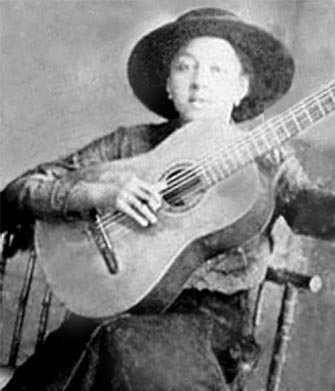9.8 Relevant composers of Cuban music in the 20th century (1900-1930).

With the flourishing development of Cuban music, significant composers emerged who enhanced and immortalized musical themes that define Cuban culture. Many of them also served as popular singers; among them, we should mention Manuel Corona, Rosendo Ruiz Suárez, Eliseo Grenet Sánchez, María Teresa Vera, Gualfredo Allué, and Isolina Carrillo.
Manuel Corona was a prominent Cuban composer, guitarist, and singer. Despite his talent and recognition among Cuban artists, he was always dogged by economic hardship. Several of his works became popular in the first decade of the 20th century, including “Mercedes,” the song with which legendary troubadour María Teresa Vera made her public debut in 1911.
He developed the bolero, the guaracha, the criolla, the Cuban punto, and the romanza. His music was used in the Mexican film “La bien pagada.” In 1900, he wrote his bolero “Doble Inconsciencia.”
Rosendo Ruiz Suárez, a prominent Cuban composer and guitarist, composed the anthem “Redención” in 1917, a tribute to Labor Day. It is probably the first labor anthem written in Latin America. In 1926, he founded the Cuarteto Cuba with Vitaliano Matas, Eusebio Corzo, and Rafael Ruiz. Three years later, he formed the Trío Habana with Emilio Betancourt and Enrique Hernández.
His influence is among the creators of the Feeling group, of which he is recognized as one of the founders. Along with other authors of this movement, he founded the publishing house Musicabana. Rosendo Ruiz’s work was enormously varied and extensive, as he composed in almost all popular genres. A lifetime dedicated to promoting Cuban music is more than enough reason to consider him one of the four great pillars of Traditional Cuban Trova.
Eliseo Grenet Sánchez, Cuban pianist, composer, and arranger, founded his Jazz Band in 1925, performing at the Montmatre cabaret and the Jockey Club. In New York, in 1936, he founded his nightclub, El Yumurí, on Broadway and 52nd Street in Manhattan. The Pedro Flores quartet performed there, with Cuban singer Panchito Riset. In 1938, Grenet presented his revue, “La Conga.”
He wrote, arranged, and conducted music for musical revues and recorded for Columbia Records and Brunswick Records. His style had a profound influence on Afro-Cuban music during the period between the two World Wars. His popular songs were numerous, including: Las perlas de tu boca (The Pearls of Your Mouth); El sitierito (The Sitter); Lamento esclavo (Slave Lament); Tabaco verde (Green Tobacco); Comparsa de los congos (Comparsa of the Congos); Papá Montero (My Life Is to Sing); Lamento cubano (Cuban Lament); Negro bembón (Black Bembón); Tu no sabe inglé (You Don’t Know English); Sóngoro cosongo (Songoro Cosongo) and his greatest classic, Ay! Mamá Inés (Ay! Mama Inés).
María Teresa Vera, Cuban guitarist, singer, and composer, formed a duo with Rafael Zequeira that launched her artistic career, a duo that remained with her from 1916 to 1924. She founded the Sexteto Occidente in 1926. Beginning in 1935, she was accompanied by Lorenzo Hierrezuelo, forming a duo that remained in the Cuban music scene for over twenty-five years.
She was a singer who captured the attention of the American record industry, where she recorded for Victor, Columbia, Brunswick, and other labels. The habanera “Veinte años” (Veinte años) is the classic piece in this troubadour’s work. It has been covered and performed by numerous singers around the world.
Gualfredo Allué, a prominent Cuban composer and guitarist, was a member of a trio with Joaquín García and Alberto Aroche during his professional career. Later, he formed the García Trio with sisters Justa and Ana María García. He also had the good fortune to lead an ensemble that accompanied María Teresa Vera on the recording of an excellent album for the Kubaney label in 1956. Throughout his career, he enriched his work with a body of excellent compositions, leaving a legacy for new generations of troubadour songs that would set standards in national culture.
Isolina Carrillo Estrada, Cuban composer and singer, began her artistic career working as a substitute pianist for the Calixto Allende Orchestra. Later, she formed the female septet Las Trovadoras del Cayo, where she served as director and played trumpet. In 1938, she began working at CMQ radio, and later at RHC Cadena Azul, where she remained until 1952.
She performed a variety of musical genres, including lyrical songs, cha-cha-chá, bolero, tango, and guaracha, as well as works by artists such as Ernesto Lecuona. It was in the 1940s that Carrillo gained the greatest recognition as a composer of boleros, guarachas, and sones. It was during this period that she created her immortal and Cuban bolero, “Dos Gardenias.” It is one of the Latin classics of all time. Many of her compositions became staples of Latin American music.








